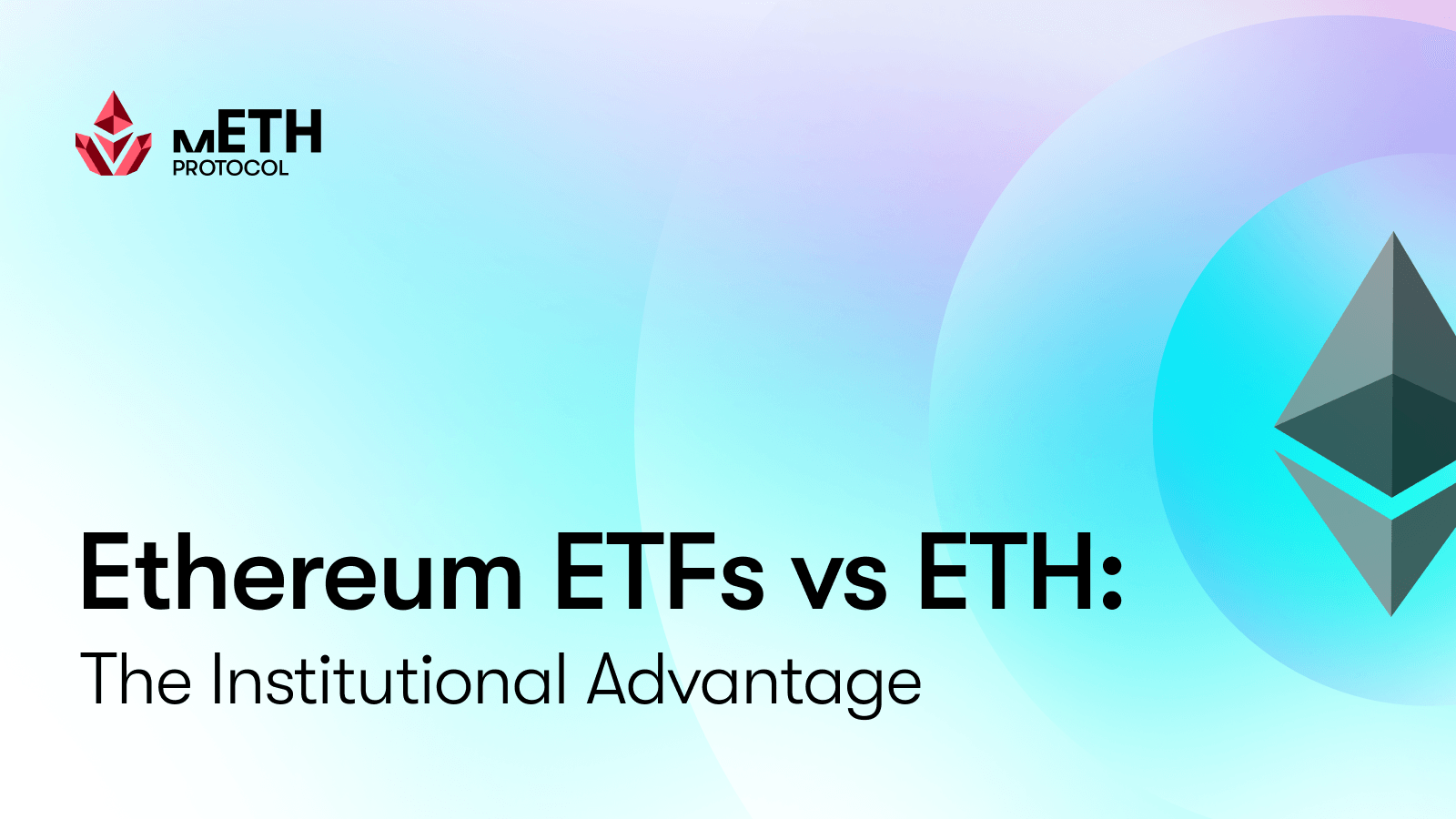
Over the past quarter, Ethereum has firmly established itself at the core of institutional treasury strategies. With more than 20 ETFs now live, capital inflows continue to surge, a sign of enduring market confidence. Today, we'll break down exactly what ETFs are, why they're important, and who's in charge of them.
From Wall Street to Wallets
For decades, ETFs have served as the bridge between traditional finance and new asset classes. They allow investors to gain exposure to underlying assets like equities, gold, or bonds without the operational burden of holding them directly. Instead, investors buy shares that track the asset's performance, while the fund itself manages custody, liquidity, and regulatory compliance.
This model works because it's familiar and efficient. ETFs are regulated, transparent, and easily tradable through traditional exchanges, making them one of the most popular investment vehicles for both retail and institutional investors.
Now, they're here on crypto, with regulated funds like BlackRock, VanEck, and Grayscale taking charge.
Spot ETFs
Unlike futures-based products that track price movements through derivatives, spot ETFs represent direct ownership of the underlying ETH held by a regulated custodian. This means investors can effectively own Ethereum through their brokerage accounts without any need for managing wallets, private keys, or on-chain transactions.
The Bull Case: Spot ETFs act as a compliant gateway for pension funds, corporates, and asset managers previously barred from holding crypto directly. They open the door to large-scale inflows and mainstream adoption.
The Bear Case: The same convenience that draws institutions in could consolidate crypto exposure under a handful of custodians, trading self-sovereignty for simplicity.
Holding ETH vs. Owning an ETH ETF
At this point, one practical question might come to mind: why not just buy ETH directly instead of purchasing an ETF?
For most institutions, that's not an option. Many funds can't legally hold crypto on their balance sheets, and even those that can often lack the infrastructure for self-custody or a network of trusted crypto custodians to manage it securely.
ETFs allow Ethereum to fit neatly into existing financial and regulatory frameworks. They can be slotted into the same structures fund managers already use, are familiar with, and pass compliance and risk committees.
Simply put, ETFs make Ethereum familiar to traditional finance, connecting to crypto without friction from complex new tools or processes.
How mETH Bridges the ETF Era and the Yield Economy on Ethereum
Owning ETH is one thing; earning on it is another.
Since 2023, mETH Protocol has steadily gained traction across DeFi and CeDeFi, earning a name for itself as the 4th largest in ETH liquid staking and restaking, with a peak TVL of ~$2.19B.
Backed by strategic partners like Bybit, mETH turns idle exposure into productive capital by allowing holders to stake and restake ETH seamlessly, earning layered rewards across the ecosystem. AVSs like EigenLayer, Karak, Veda, and Symbiotic allow these yields to further compound across multiple networks, all without requiring active management or complex setup.
This quarter, the needle turned to institutional security. As such, integrations with institutional custodians like Copper and OSL took center stage, enabling mETH Protocol to stake and restake inside compliant, secure environments, allowing institutional ETH to earn some of the highest yields on the market without leaving regulatory frameworks.
In a snapshot taken from the official SΞR website, Mantle currently holds ~$406.4M in ETH, making it the largest among all Web3 entities tracked on-site.
- Roughly $72M of that ETH is delegated to mETH and cmETH.
- mETH is up 69.18% YTD, outperforming much of the liquid staking landscape.
As capital flows into ETFs and institutional exposure deepens, this sets the foundation for a more sustainable, yield-driven phase of growth across Ethereum and the broader ecosystem.
Disclaimer: The purpose of this content is educational only and should not be relied upon as legal, business, investment, tax, or other advice.